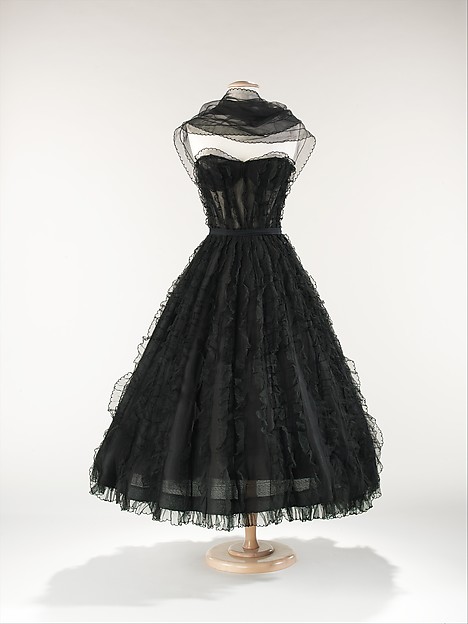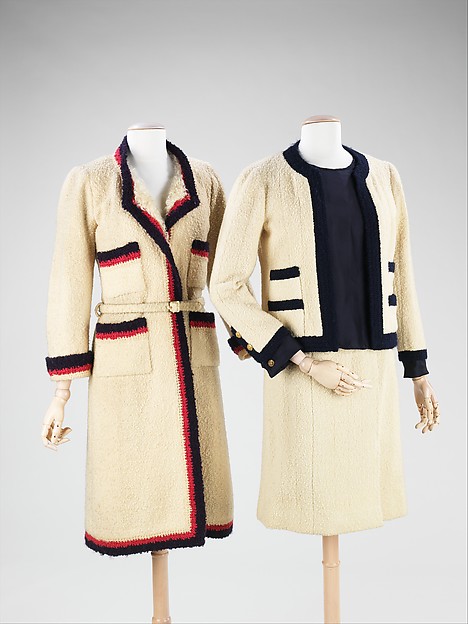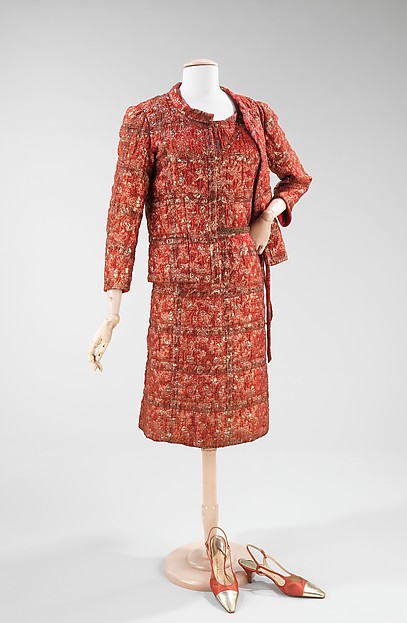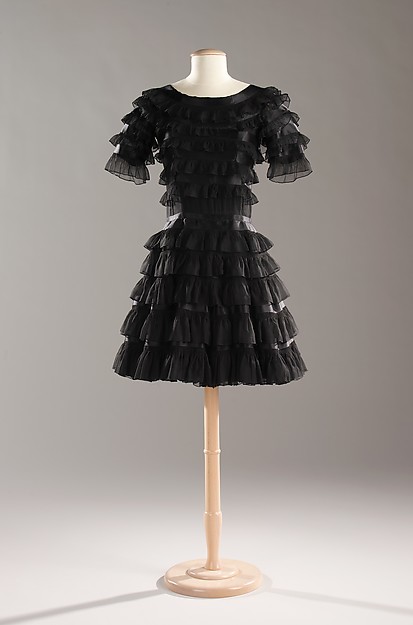
When Chanel reopened her design house following World War II, she faced the task of reinterpreting and updating her signature design elements for the post-War era. This dress exemplifies how the designer met this challenge. Working with the conventional hour-glass silhouette of the period, Chanel marks this dress as her own through her use of ruffled black chiffon, a textile she frequently employed for evening wear the 1930s. Rather than applying the ruffles in horizontal tiers, she used vertical rows to emphasize the conical shape of the skirt. The construction of the bodice, however, best illustrates her characteristic bold approach. The unlined net leaves the bodice sheer, revealing the interior construction of the dress. The heavy boning and placement of the labels directly on the net indicates no additional foundation garment or slip was intended, making this dress as seductive as a Chanel's creations from the 1920s and 1930s.

Gabrielle Chanel is the designer most responsible for establishing the modern way of dressing that encompasses comfort, function and simplicity. This coat, dating from the period of Chanel's renaissance after World War II, embodies her design philosophy in its materials and cut. The design is closely modeled on the suits she was producing at the same time. The jaunty stripes, self belt and oversized pockets give the coat a classic sportif look, however the curly lamb lining makes this a luxurious garment, a striking example of highly customized work from the Chanel atelier.

Gabrielle Chanel is the designer most responsible for establishing the modern way of dressing that encompasses comfort, function and simplicity. Chanel championed ensembles comprised of soft knit fabrics early in her career and remained committed to the practicality of matched pieces when she reopened her house in 1954. Instead of humble knits, however, in the 1950s and 1960s she sought out complex textiles made of textured weaves which sometimes gleamed with metallic threads, like this example. Rene Mancini, maker of the shoes, was the originator of the classic two-tone black and beige Chanel pump. For this ensemble, the shoes are orange and gold to coordinate with the textile of the suit.

In this example, finely-shirred chiffon ruffles, a characteristic of Chanel evening wear in the 1930s, have been paired with wide black satin ribbons to create a contrast between glossy and matte textiles. The tiers of ruffles partially veil the applied ribbons, a subtle detail that indicates the garment's couture workmanship. What might have been a severe garment, with its square neckline at the back, is instead transformed into an example of Chanel's masterful "flou."

No comments:
Post a Comment